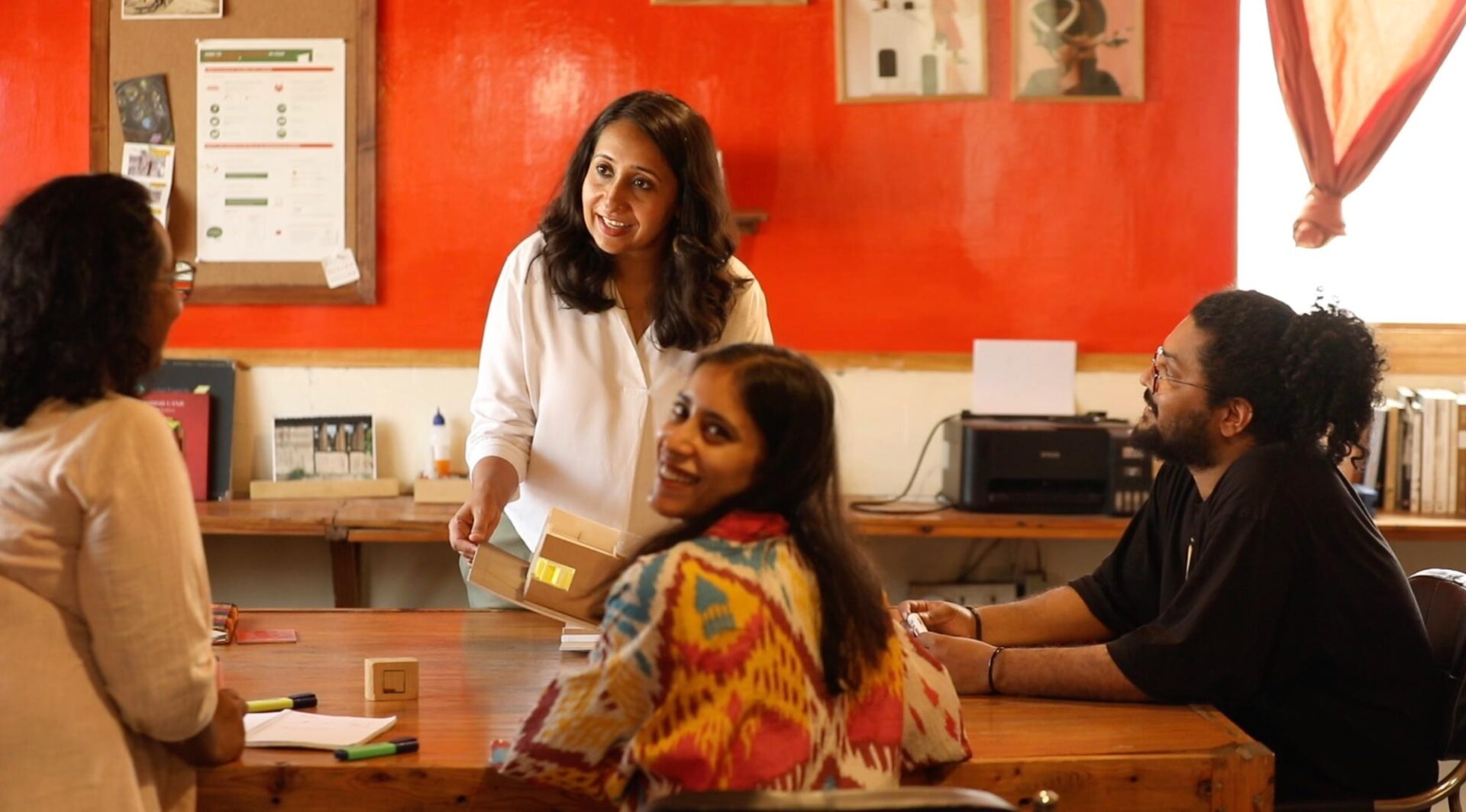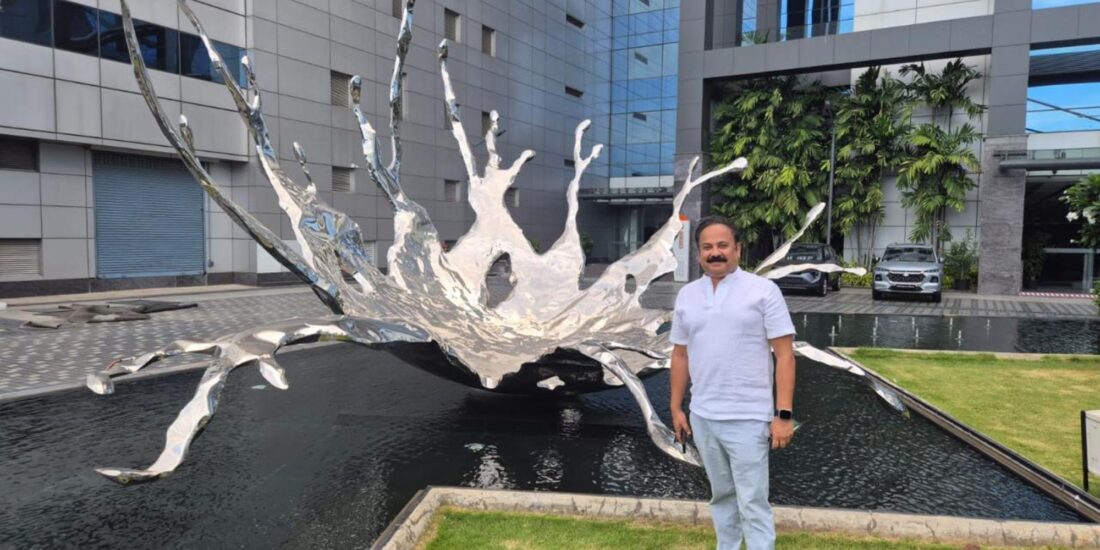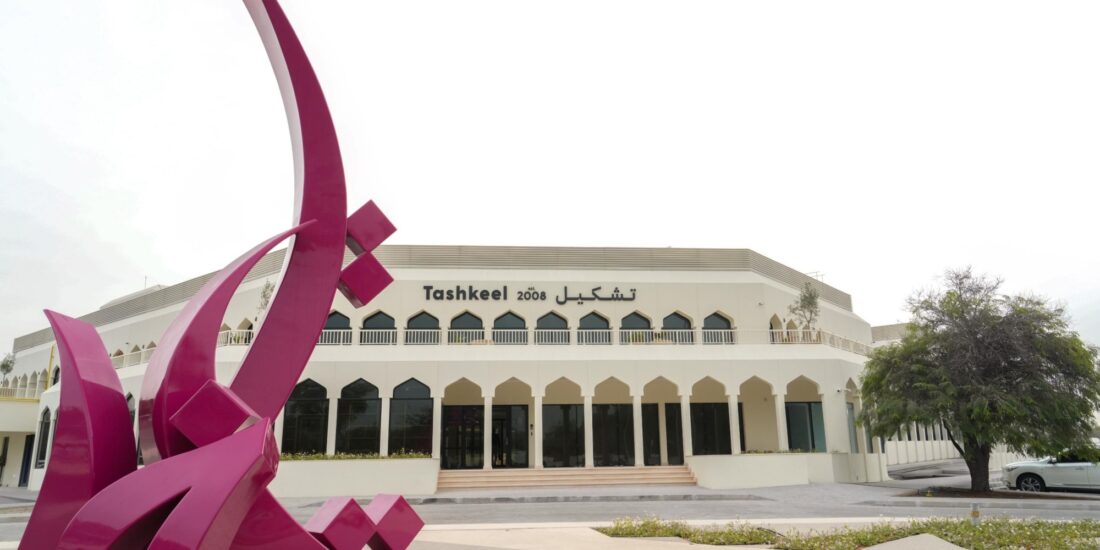Reclaiming Space with Social Design Collaborative
What makes a space feel like it belongs to everyone? Architect and activist Swati Janu, founder of Social Design Collaborative, a Delhi-based interdisciplinary practice explores this through community-driven design. In this conversation, she speaks with Aishwarya Kulkarni about her work at Jaipur Art Week 2024 and why truly public spaces are shaped by people, not plans.
A few weeks ago, I sat on a crumbling step outside an old railway station, waiting for a train that was running late. A child next to me drew patterns in the dust, an elderly man leaned against a pillar to rest, and a vendor balanced tea cups on a tray with quiet ease. Nothing about that place was formally “designed,” yet it held us all. It made me wonder: why do the most meaningful public spaces often emerge from accident, not architecture? This conversation with Swati Janu is about reclaiming that truth, about memory, material, and the kind of spaces that don’t ask permission to belong.
Architect, activist, and urban practitioner Swati Janu is the founder of Social Design Collaborative, a Delhi-based interdisciplinary practice at the intersection of architecture, design, and social justice. Swati’s practice focuses on bridging design and advocacy to democratise urban development. Whether working with informal settlements, curating public installations, or reimagining gender-inclusive spaces, her approach remains grounded in community-led processes and spatial equity.
Aishwarya Kulkarni caught up with Swati to talk about her installations at the Jaipur Art Week 2024, the firm’s broader philosophy, and the urgent need to reframe public space design in India through inclusivity, memory, and collective authorship.
SCALE: You identify as an architect, but your practice goes far beyond conventional building. What was the journey that led you to found Social Design Collaborative?

Balcaos at Serendipity Arts Festival. Photo credit: Social Design Collaborative
SWATI: Yes, I do identify as an architect, even if my work looks slightly different from conventional architectural practice. I started out in a mainstream firm, but over time, I became disillusioned by how inaccessible architecture was in India. The majority of people in our country build informally and rarely work formally with architects!

“City for All?” exhibition at an exhibition in Jaipur, Photo credit: Social Design Collaborative
Activism entered my work organically. I began engaging with informal settlements, and the more I saw how cities are built by communities themselves, the more I felt compelled to take action to support them. For me, activism is simply taking collective action when there’s a critical need and something needs to be done. That eventually evolved into advocacy, and Social Design Collaborative was founded on the idea of practicing architecture as a socially responsive and inclusive discipline. We work with communities, sociologists, social workers, and increasingly with government institutions to influence policy. It’s a multidisciplinary approach where design and building are not the end goal, but the medium for change.
SCALE: Your work with installations in public spaces has gained significant visibility lately, particularly the life-size architectural pieces showcased at Jaipur Art Week. Why public art, and why now?

“City for All?” exhibition at Jawahar Kala Kendra, Jaipur, Photo credit: Social Design Collaborative
SWATI: We’ve always worked on collectively building community infrastructure, such as schools and anganwadis. But we realised that public art could also be a powerful tool for discourse. It’s accessible, non-technical, and allows us to raise awareness about urban issues in a way that invites participation.

“City for All?” exhibition under an underpass in Chandigarh, Photo credit: Social Design Collaborative
Our first significant public art project was City for All? in 2021, done in collaboration with the French Embassy. We went to six cities — Delhi, Jaipur, Ahmedabad, Pune, Bangalore, Chandigarh — and mapped how different people experience public space based on gender, caste, and ability. From that, we learned and discussed that what’s considered public space is not equally public for everyone.

“City for All?” exhibition in the Old City Chowk in Ahmedabad, Photo credit: Social Design Collaborative

Balcaos. Photo credit: Social Design Collaborative
In Goa, for the Serendipity Arts Festival, we created movable balcaos (Goan verandahs) that travelled around the city, inviting people to sit and talk. In Jaipur, the installations were more personal, inspired by my ancestral home in Shekhawati, Rajasthan. They were meant to evoke the sensory and spatial memory of vernacular homes and collective living, now disappearing in urban India.
SCALE: Tell me about those installations — what were they made of and how did people interact with them?

Photo credit: Social Design Collaborative
SWATHI: The series was titled Kal ke beej — “Seeds of Yesterday / Tomorrow”. In Hindi, “kal” means both yesterday and tomorrow, and that cyclical nature of time deeply resonated with our theme. We were talking about social fabric, vernacular architecture, and what gets lost with gentrification and fragmentation.

Photo credit: Wamiq Saifi
The installations were abstractions — parts of staircases, chajjas, low walls — all inspired by my grandparents’ home. They referenced shared terraces, courtyards, and spaces of encounter that defined community life. We used tactile textures, lime plasters, and finished everything in bold blue so it wouldn’t feel like a literal recreation, but rather a contemporary reinterpretation.

Photo credit: Wamiq Saifi
And the public really responded! Children ran up and down the steps, women sat in groups, and street vendors even used them to sell goods. In a way, the installations weren’t just viewed, they were lived. That’s what we wanted — to see public architecture reoccupied and reimagined by its users.

Photo credit: Nandan Ghiya

Photo credit: Nandan Ghiya
SCALE: Were there any particularly memorable public reactions?

Photo credit: Wamiq Saifi
SWATI: So many! One of my favourite things was seeing people take selfies, use them for wedding shoots, or simply rest on them. At Albert Hall, where one set was placed, it became a vantage point for photographing the monument itself. But beyond the play and interaction, we overheard stories — people reflecting on their villages, on homes left behind, and what those spaces meant to them.
In some places, people didn’t even read the concept note — they just felt something. That, to me, is powerful. It means the material, form, and context resonated on a visceral level. In public art, the artist’s intent matters less than the audience’s response.
SCALE: What role did collaboration play in this project?

Honouring the artisians behind the craft.
SWATI: A huge one. One of our installations was done in collaboration with Nila House, a non-profit working with natural dyes and block printing in Bagru. We used unfinished dabu fabrics dyed in traditional indigo, but before they were dyed. This meant they retained their sandy texture, tying beautifully with our theme of tactility and impermanence.
 We wanted to honour the artisans of Jaipur as part of the public narrative. We believe craftspeople, street vendors, women, and children — they’re all part of the story of public space. It’s incomplete without them.
We wanted to honour the artisans of Jaipur as part of the public narrative. We believe craftspeople, street vendors, women, and children — they’re all part of the story of public space. It’s incomplete without them.
SCALE: Do you see such installations as one-offs or the beginning of something larger?

Concept render of the installations in Jaipur Art Week, Photo credit: Social Design Collaborative
SWATI: Definitely the beginning. Many of these installations have already moved to educational institutions and libraries. The balcaos from the Goa project now sit in the Bookworm Libraries in Goa where children use them every day. That afterlife is crucial — we don’t want these works to be temporary spectacles.
And I’ve come to realise that art, even if intangible, shapes discourse. It can’t always be measured in metrics like a building, but it stirs something. And over time, that shapes policy, shapes perception. That’s why we do it.
SCALE: What do you think are the most urgent challenges facing public spaces in Indian cities today?
SWATI: Representation. That’s the biggest challenge. Who designs our cities? Who decides public policy? Are there any transgender people in planning departments? Very few women, even. Architecture is still male-dominated, and design decisions reflect that.
The lack of inclusion shows up everywhere, in transport, in toilets, in the way women aren’t “allowed” to loiter. CCTV cameras are often touted as solutions, but that’s fear-based safety. What we need is dignity, respect, and inclusion. That only comes when our cities are designed by those who live in them, all of them.
SCALE: And what is your vision for Social Design Collaborative moving forward?

Mapping activity in Jaipur, Photo credit: Social Design Collaborative
SWATI: We’re moving increasingly into policy, advocacy, and collaborative governance. Our work has always been participatory, we listen, we co-create, but now we’re also trying to influence the systems that shape our built environment.
Ultimately, it’s about spatial justice. Whether it’s housing rights, gender-inclusive parks, or street vendors’ access to space, we want to amplify voices that have been excluded. Architecture isn’t just about buildings; it’s about power, equity, and belonging.
SCALE: Do you have a personal mantra or guiding philosophy that keeps you going?
SWATI: Self-care. It’s simple, but it’s radical when you work in activism or care-based work. We care deeply about communities, cities, and justice, yet often overlook the importance of caring for ourselves. I’m learning to change that. Take care of yourself while you take care of the world, and that’s my mantra now.




